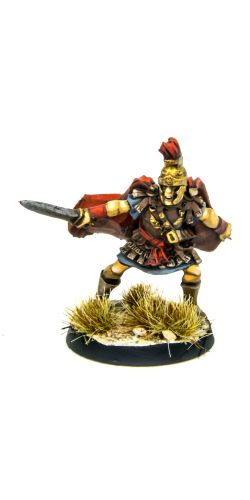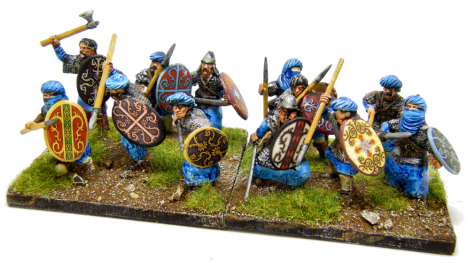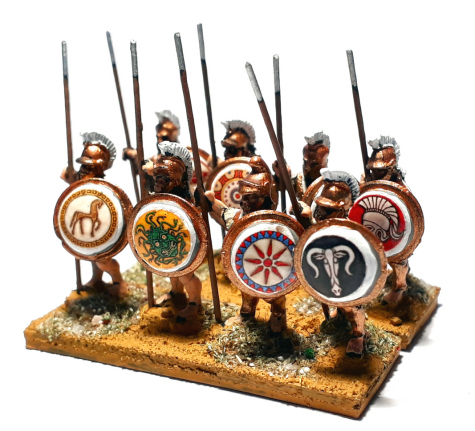ADLG - Art De La Guerre
Wargaming rules - Ancient and Medieval

Art De La Guerre is a set of rules for miniatures that allows you to fight battles ranging from early Antiquity (3000 BC) to the end of the Middle-ages (1500 AD). Each player commands an army of twenty or so units.
The system allows you to play with miniatures of any scale from 6 mm to 28 mm, including 1/72nd scale plastic soldiers. The basing system is fully compatible with DBx and therefore allows you to use your existing armies.
The rulebook for Art De La Guerre also includes all the army lists you will need for the Ancient and Medieval periods as well as for the pre-Columbian Americas - no fewer than 300 of them!
Everything is included in one book, so there is no need to buy lots of expensive supplements. Additional army lists will be released later for the Renaissance period and for Fantasy armies.


Art De La Guerre offers a range of formats with regard to playing area and numbers of figures. The 200 points format of Art De La Guerre requires as few as half the figures of some other rules. This means that players can build up new armies faster and cheaper. The playing area in this format for 15 mm figures is 120 cm by 80 cm and for 25-28 mm figures is 180 cm by 120 cm. However the larger formats also allow fans of big battles to play on larger tables with more figures.
A game of Art De La Guerre can be played in less than two hours when the players are familiar with the rules. This allows you to play more than one game in an evening and also makes tournaments easier to organise.

Art De La Guerre is a simple and realistic rule set, clearly written and well illustrated with many diagrams and examples. The principles that guided the development of the rules are:
- Art De La Guerre is played with bases comprising from one to four figures or a single model (as in DBM). A unit is the basic element for manoeuvre and combat. Units are represented by a single base for mounted and light troops or a combination of two or three bases for other foot units.
- An army will generally consist of from twenty to thirty units divided into three corps (right wing, centre and left wing), each led by a commander.
- Adjacent units from the same corps can move together as a group. Each commander can issue orders to his units (or groups of units) every game-turn. The more capable the commander, the more different or complex orders he can give to his troops.
- Each troop type is defined by its principal function on the battlefield rather than by a list of its weapons or the amount of its armour. Each troop type has a basic factor against other troops.
- In Art De La Guerre, each unit has a number of cohesion points. Heavier troops in close formation start with more cohesion points than lighter ones. The losses from shooting and close combat gradually reduce a unit's cohesion and when it reaches zero the unit is routed and removed from play.
- The combat system is very simple: for every combat both player rolls 1D6 and add their unit's base factor plus any bonuses; the higher score wins the combat and the losing unit suffers cohesion losses that vary according to the difference between the two results.
- Troops armed with missile weapons can shoot: archers, cavalry, light troops, etc. A successful shot results in the target losing one cohesion point. Obviously it is better to weaken a unit by shooting before charging it.
- Light troops perform their historical role of harassing the enemy with missile weapons. If charged by heavier troops in clear terrain they must flee and if contacted they are eliminated.
- Art De La Guerre has specific rules for charges, impetuous troops, evading, interpenetration, bursting through friends, rallying units, routs, pursuit and even elephant rampage!
- You will also find complete rules for the placement of terrain, ambushes, flank marches and adding an allied corps to your army.

Art De La Guerre is published by ONYX EDITIONS